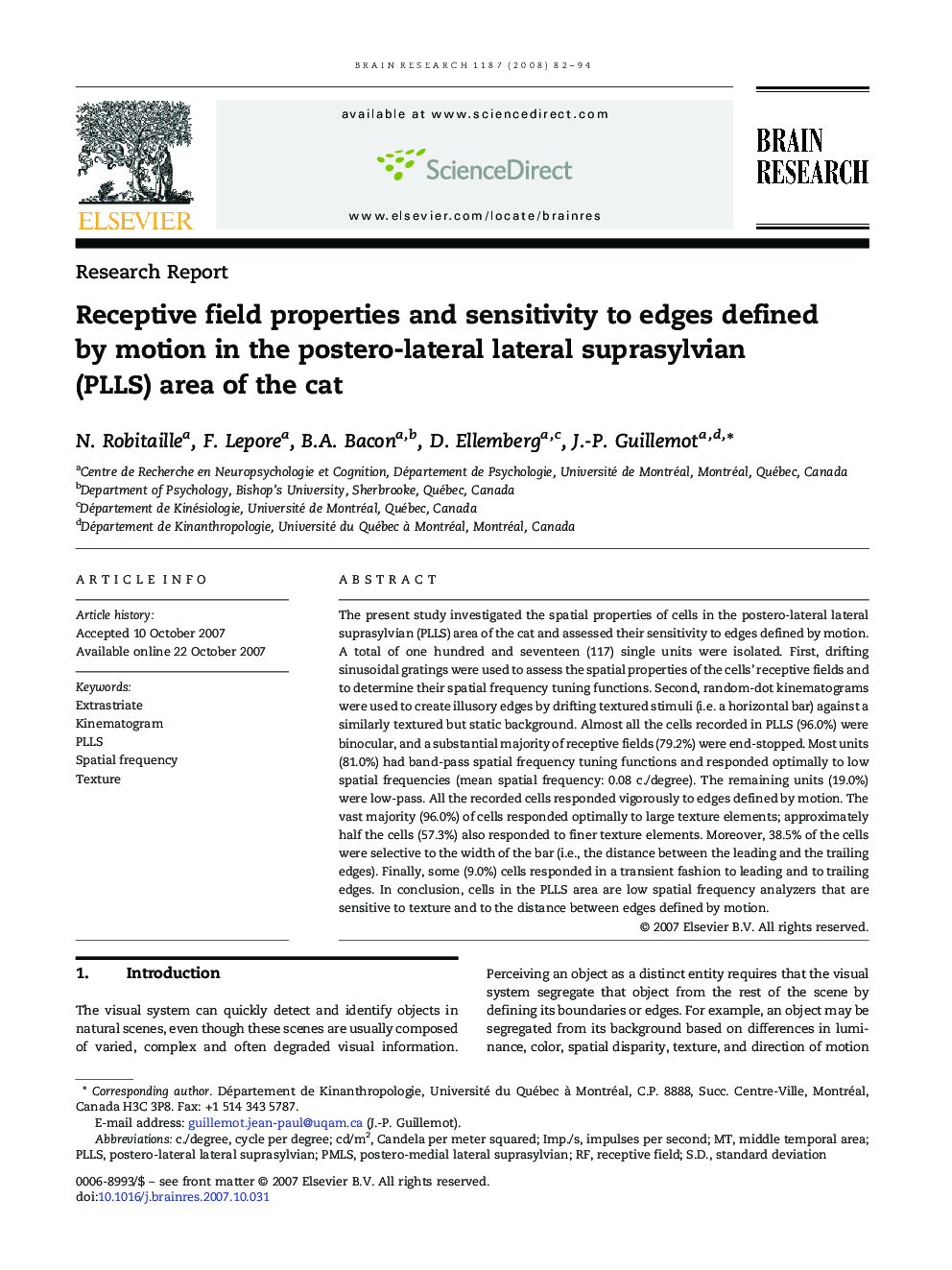| Article ID | Journal | Published Year | Pages | File Type |
|---|---|---|---|---|
| 4330386 | Brain Research | 2008 | 13 Pages |
Abstract
The present study investigated the spatial properties of cells in the postero-lateral lateral suprasylvian (PLLS) area of the cat and assessed their sensitivity to edges defined by motion. A total of one hundred and seventeen (117) single units were isolated. First, drifting sinusoidal gratings were used to assess the spatial properties of the cells' receptive fields and to determine their spatial frequency tuning functions. Second, random-dot kinematograms were used to create illusory edges by drifting textured stimuli (i.e. a horizontal bar) against a similarly textured but static background. Almost all the cells recorded in PLLS (96.0%) were binocular, and a substantial majority of receptive fields (79.2%) were end-stopped. Most units (81.0%) had band-pass spatial frequency tuning functions and responded optimally to low spatial frequencies (mean spatial frequency: 0.08Â c./degree). The remaining units (19.0%) were low-pass. All the recorded cells responded vigorously to edges defined by motion. The vast majority (96.0%) of cells responded optimally to large texture elements; approximately half the cells (57.3%) also responded to finer texture elements. Moreover, 38.5% of the cells were selective to the width of the bar (i.e., the distance between the leading and the trailing edges). Finally, some (9.0%) cells responded in a transient fashion to leading and to trailing edges. In conclusion, cells in the PLLS area are low spatial frequency analyzers that are sensitive to texture and to the distance between edges defined by motion.
Keywords
Related Topics
Life Sciences
Neuroscience
Neuroscience (General)
Authors
N. Robitaille, F. Lepore, B.A. Bacon, D. Ellemberg, J.-P. Guillemot,
